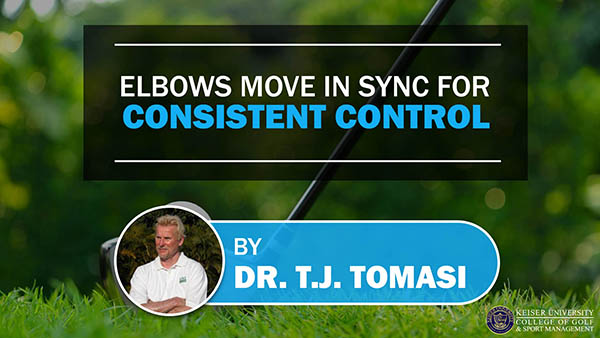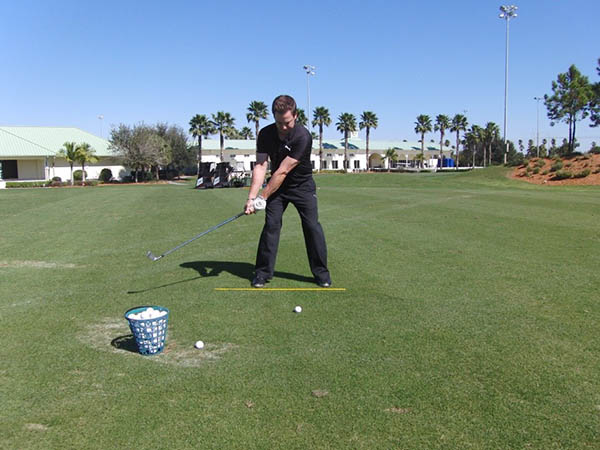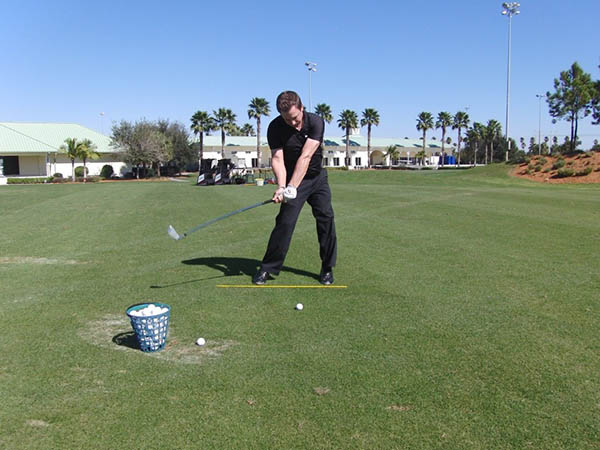Elbows Move in Sync for Consistent Control

By Dr. T. J. Tomasi, Keiser University College of Golf Senior Faculty and Director of Research
The most reliable type of elbow action used in the golf swing is a non-manipulative motion that occurs as a result of syncing your arms and body. While you can hit the ball by flying out your right elbow, it’s better not to because it requires that you make a compensation before impact to return the face to square. And under pressure, compensations are hard to time.
Because of the momentum of your clubhead as it swings back and through, there is a certain amount of forearm rotation both away from and through the ball, but it’s a natural motion that works correctly only when you let it happen. Forearm rotation doesn’t mean the elbows splay out. If you do it correctly, your forearms rotate to accommodate body coil, while the elbows keep their distance from each other.
To get the feel, use a belt to secure your arms at address. Place it just above your elbows and draw it snug, then take some practice swings. It should remain in place from start to finish with no undue pressure on the belt at any point.

This young pro’s elbows are the same width apart in the takeaway, pictured above, and just before impact. He’s hitting a 6-iron with a speed of about 92 mph at impact, and he maintains the separation necessary for control, even though he goes from 0 to 92 mph in less than a second.

The benchmark of proper forearm management is found at impact, where the elbows are at the same width as they were at address. The clubface is squared at impact by the rotation of your body as well as the “soft” but inexorable roll of your forearms without changing the distance separating your elbows.
If you’d like to study with Dr. Tomasi and other PGA Master Professionals, contact The College of Golf today.














